Run electrical cable through walls and across ceilings without tearing them apart by fishing wire
Fishing Electrical Wire Through Walls
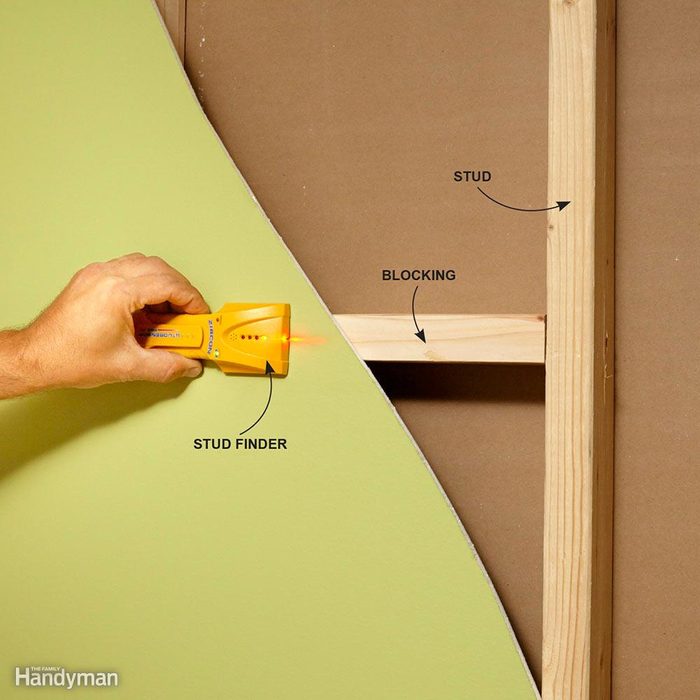
Check the Whole Wall Cavity With a Stud Finder
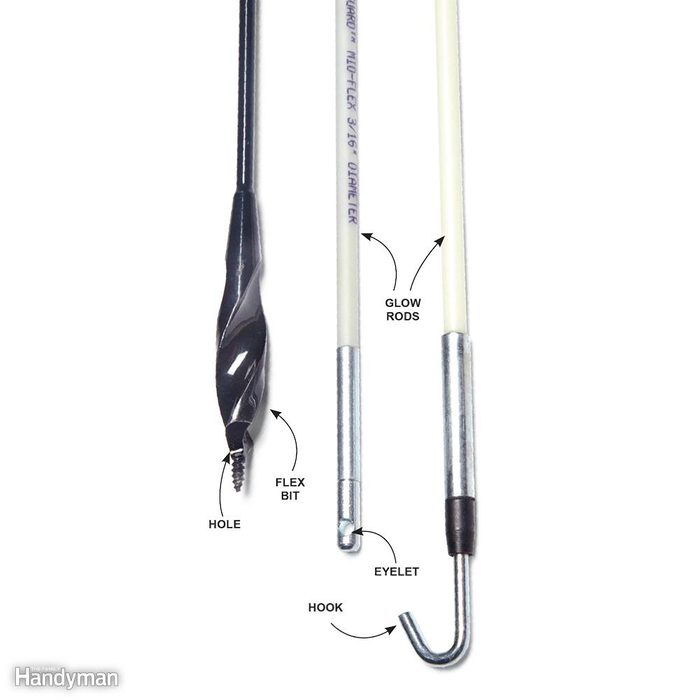
The Tools You Need
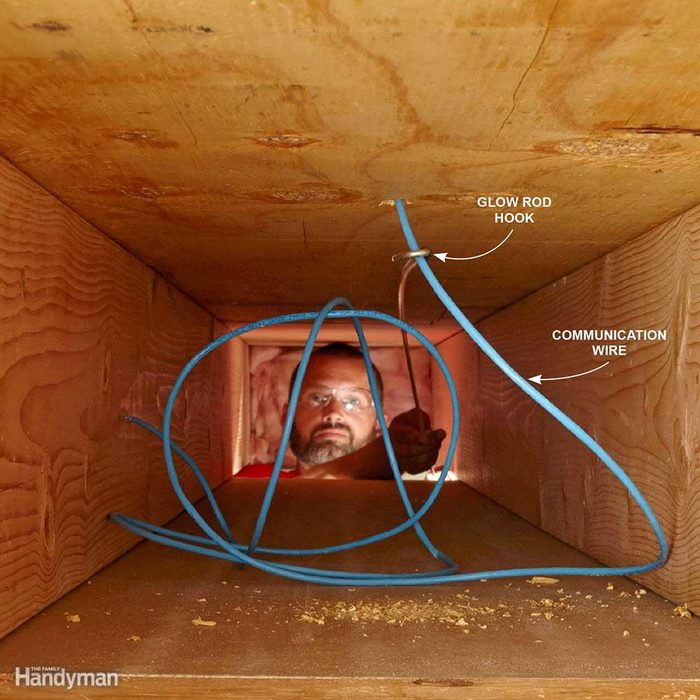
Push Through More Than You Need
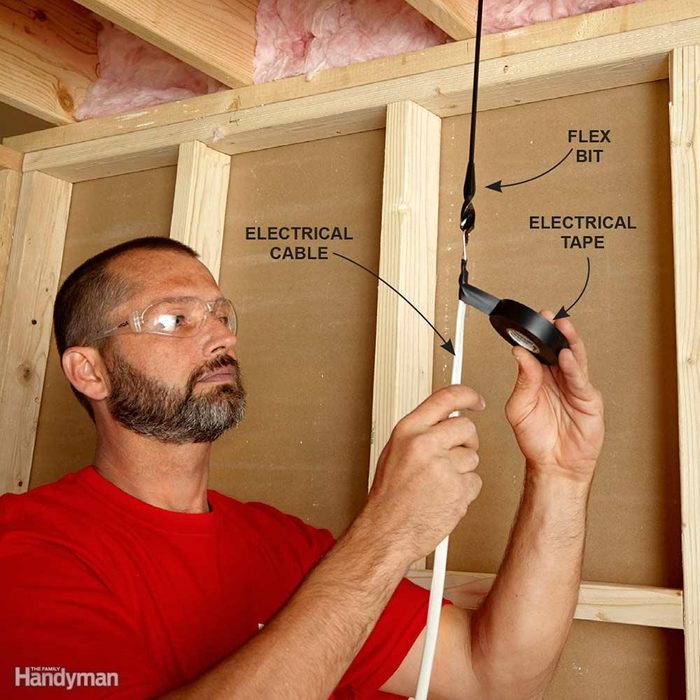
Hook on to a Flex Bit
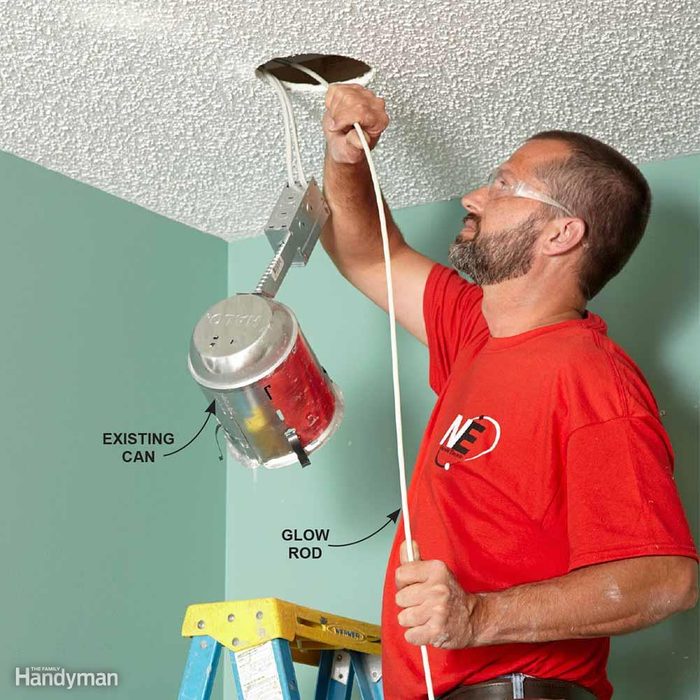
Fishing Wire Through the Holes for Recessed Lights

Protect Drywall With a Mud Ring
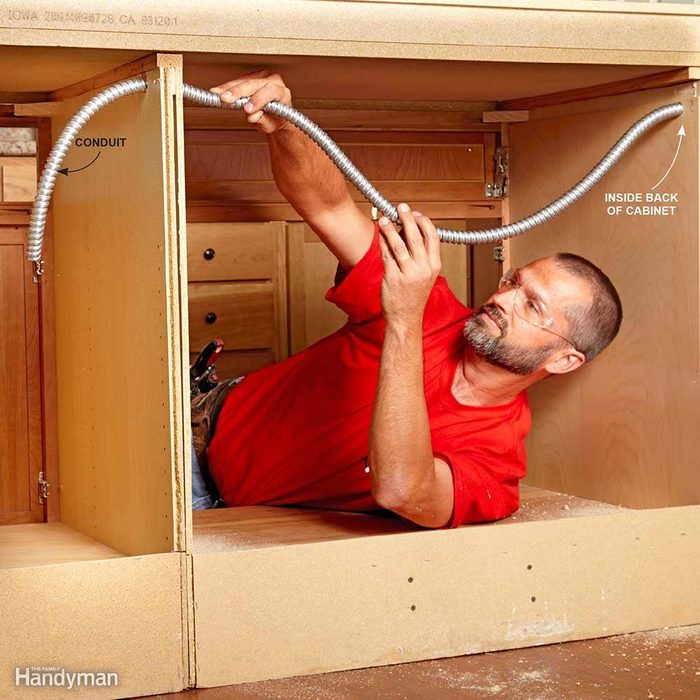
Install Conduit Inside Cabinets
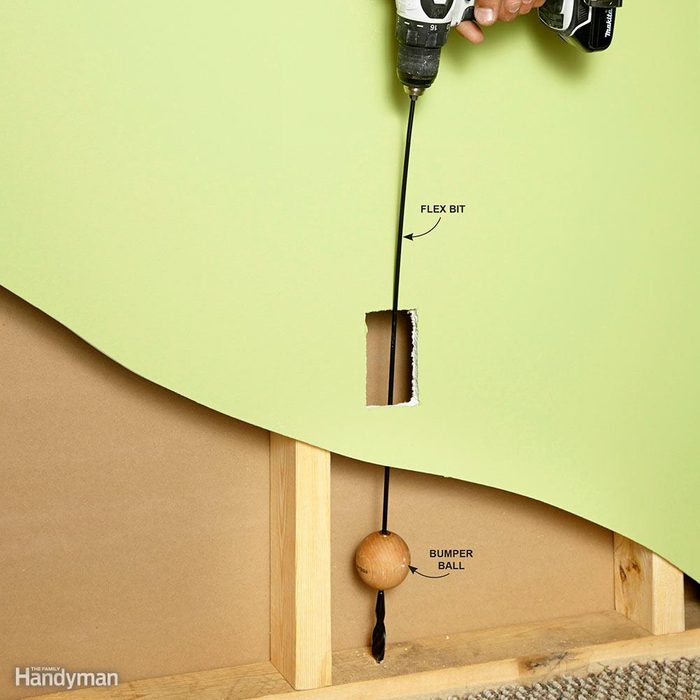
Invest In a Bumper Ball
Wires aren’t supposed to be installed any closer than 1-1/4 in. from a penetrable surface (the outside of the drywall). That means you shouldn’t be drilling holes right next to the drywall. But it’s not always easy to control where a flex bit goes. A Bumper Ball flexible drill bit guide installed on the end of your flex bit will help maintain the proper space between the bit and the outside of the wall cavity. You can buy a set of two at electrical suppliers or at licensedelectrician.com.
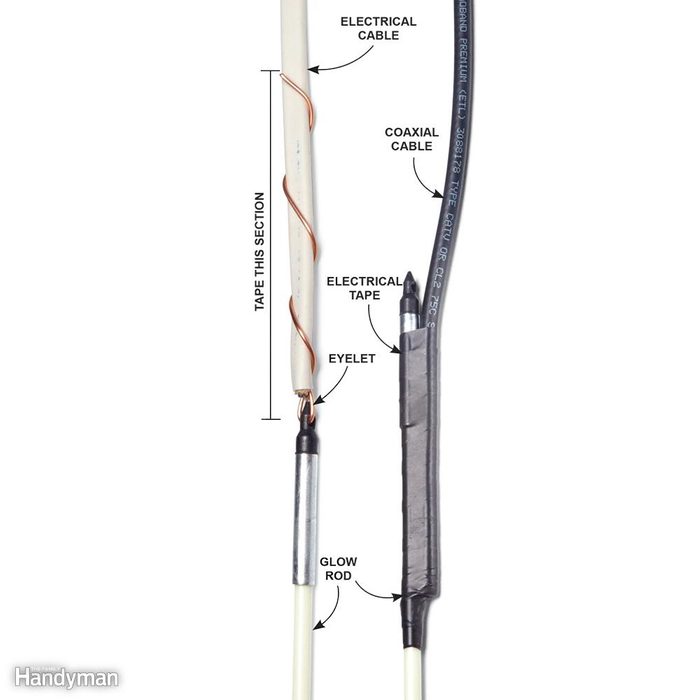
Hold on Tight
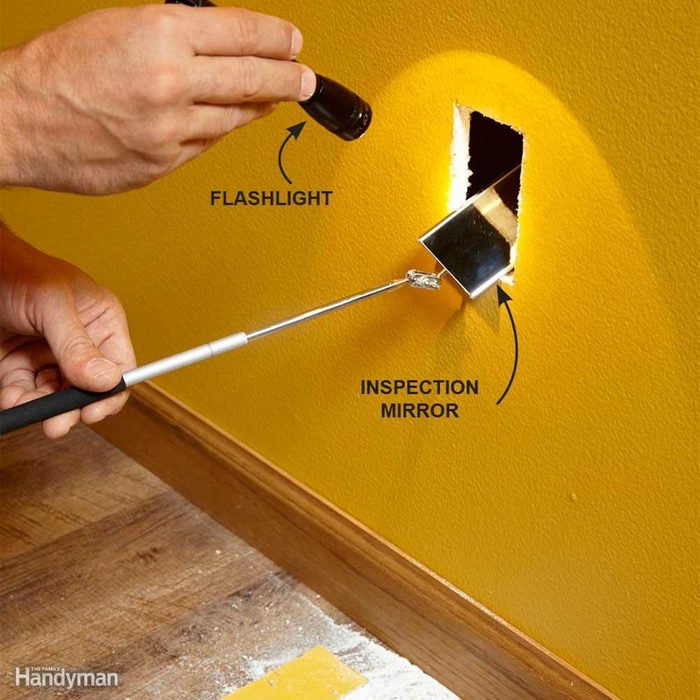
Get a Better View With an Inspection Camera
You know your wire is in there somewhere, but you just can’t seem to find it. It’s probably hung up on another wire or pipe, but guessing isn’t going to solve the problem. Instead, shine a flashlight onto an inspection mirror to find out exactly what’s going on. This is a simple, inexpensive tip that can save you a lot of time and frustration. Pick up an inspection mirror at an auto parts store for less than $10. Or bump it up a notch and pay a few more bucks for a mirror with small built-in lights, so you can see exactly what’s going on.
Don’t fret if you’ve come up short with your wire. The video below will give you tips on how to fix a short wire situation.
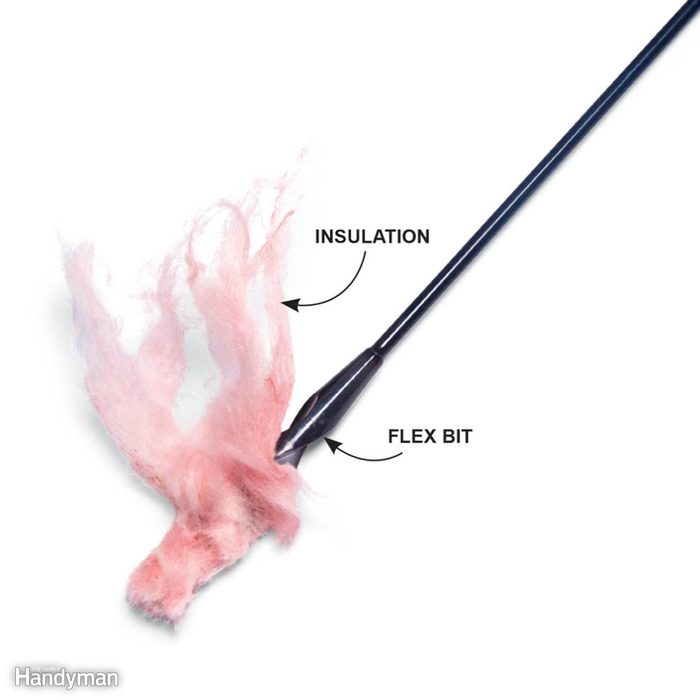
Don’t Spin the Bit In Insulation

Keep Low-Voltage Wires Away From Electrical Cables
It’s really tempting to fish low-voltage wires (like coax and Cat-5e) through existing holes occupied by electrical cables, but don’t do it! Even though cables are insulated, the high-voltage current can interfere with the signal in the low-voltage wires. This could result in bad TV reception or unreliable phone and Internet service. Drill a new hole, and keep the new low-voltage wire several inches away from electrical cables. It’s OK to run low-voltage wires perpendicular to cables, and it’s also OK to run low-voltage wires next to electrical wires that are encased in conduit or metal sheathing.
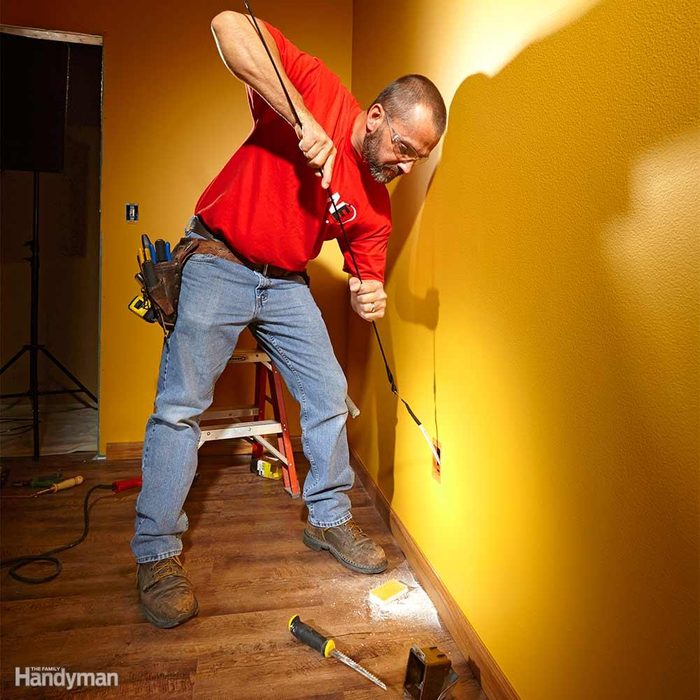
Buy Extra Wire
Have plenty of extra wire or cable on hand, because it’s not likely that you’ll be able to fish a wire in a straight line from Point A to Point B. There’s also the possibility that your wire might get hung up on something, and you’d have to abandon it and start over. “I’m a big fan of more wire than less,” Cross says. “I’d rather look at it than look for it, and it’s a lot cheaper to pull a little extra than to redo it.” He likes to leave between 12 to 24 inches of extra wire at each end.
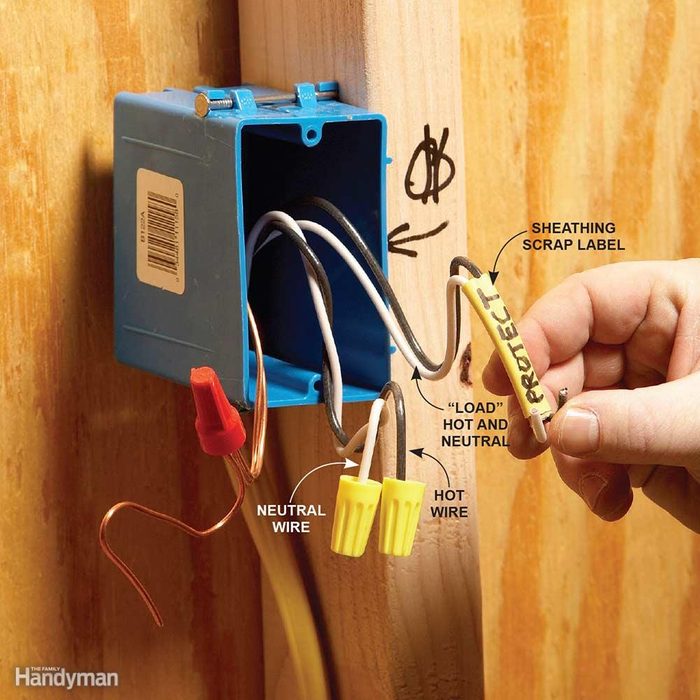
Identify Roughed-In Wires
If you’re installing more than one wire, save yourself a lot of headaches by identifying the wires as you install them. It’s a lot harder to figure out which wires go where when they’re covered with drywall. The electricians we talked to use a “code” for marking wires, and so can you. Develop a system and write it down. You don’t want to have to guess after you’ve gone through all the trouble of running the wires all around the house.
About the Expert
- Matt Cross is a licensed electrician in the State of Massachusetts. He has over ten years of industry experience in residential and commercial work.



















